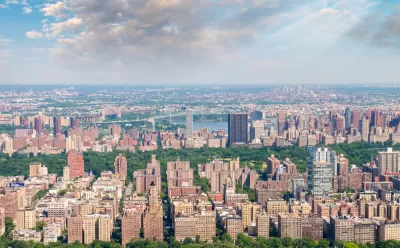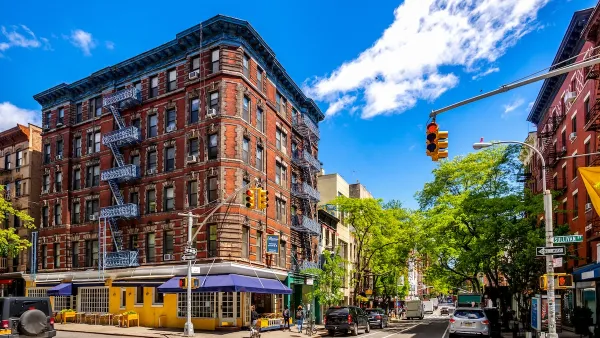Size and growth go hand in hand, until they don't, according to a new analysis. Density might be the reason that synergy eventually shortcircuits.

Richard Florida shares insights about a new study by Jordan Rappaport of the Federal Reserve Bank of Kansas City examining the size and density of metropolitan areas for lessons in growth.
On one hand, size (in terms of population and employment) is a huge advantage. Bigger places inexorably grow bigger. And this is especially true for relatively large cities (up to 500,000 people) with plenty of space to grow. For these places, their initially large populations beget faster growth over time.
But, on the other hand, density cuts the other way and can slow growth for very large places. This would seem to be at odds with urban theories from Jane Jacobs and others, that view density and clustering as an essential spur to innovation. But Rappaport finds that density generates diseconomies like traffic congestion or expensive housing costs, which limit growth.
To produce these findings, Rappaport examined job and population data for "more than 2,000 American communities, including more than 350 metropolitan areas, 554 micropolitan areas, and 1,300 “non-core” counties," explains Florida. Florida supplements the article with infographics pulled to further illustrate the points made in the study.
FULL STORY: How Density Can Deter Growth in America’s Largest Metros

Planetizen Federal Action Tracker
A weekly monitor of how Trump’s orders and actions are impacting planners and planning in America.

Congressman Proposes Bill to Rename DC Metro “Trump Train”
The Make Autorail Great Again Act would withhold federal funding to the system until the Washington Metropolitan Area Transit Authority (WMATA), rebrands as the Washington Metropolitan Authority for Greater Access (WMAGA).

The Simple Legislative Tool Transforming Vacant Downtowns
In California, Michigan and Georgia, an easy win is bringing dollars — and delight — back to city centers.

The States Losing Rural Delivery Rooms at an Alarming Pace
In some states, as few as 9% of rural hospitals still deliver babies. As a result, rising pre-term births, no adequate pre-term care and harrowing close calls are a growing reality.

The Small South Asian Republic Going all in on EVs
Thanks to one simple policy change less than five years ago, 65% of new cars in this Himalayan country are now electric.

DC Backpedals on Bike Lane Protection, Swaps Barriers for Paint
Citing aesthetic concerns, the city is removing the concrete barriers and flexposts that once separated Arizona Avenue cyclists from motor vehicles.
Urban Design for Planners 1: Software Tools
This six-course series explores essential urban design concepts using open source software and equips planners with the tools they need to participate fully in the urban design process.
Planning for Universal Design
Learn the tools for implementing Universal Design in planning regulations.
Smith Gee Studio
City of Charlotte
City of Camden Redevelopment Agency
City of Astoria
Transportation Research & Education Center (TREC) at Portland State University
US High Speed Rail Association
City of Camden Redevelopment Agency
Municipality of Princeton (NJ)





























